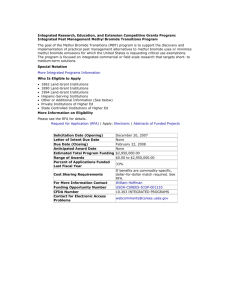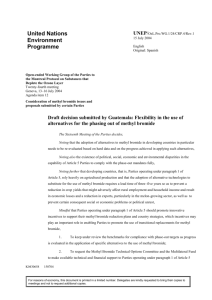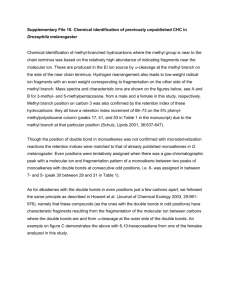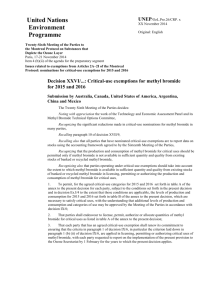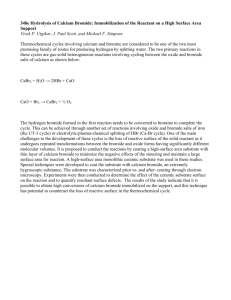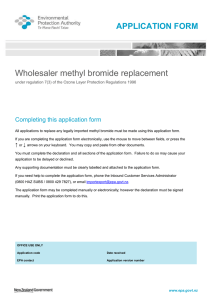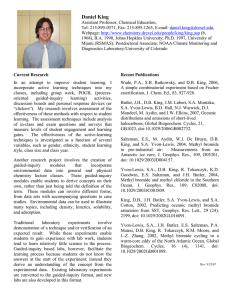DRAWING MECHANISMS
advertisement
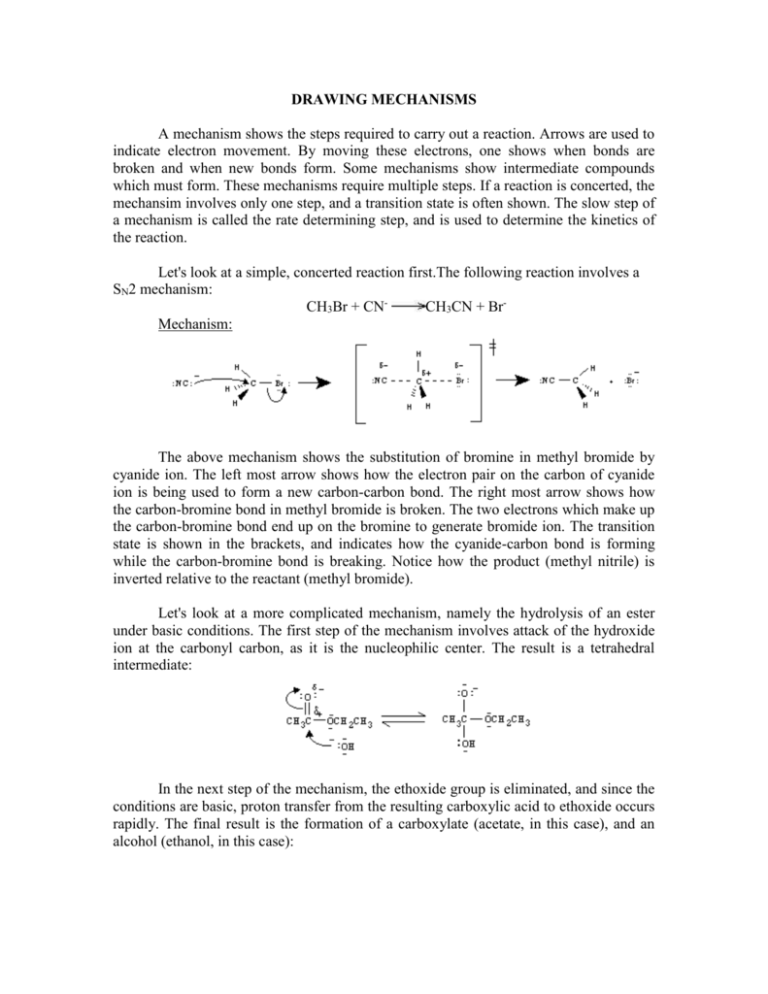
DRAWING MECHANISMS A mechanism shows the steps required to carry out a reaction. Arrows are used to indicate electron movement. By moving these electrons, one shows when bonds are broken and when new bonds form. Some mechanisms show intermediate compounds which must form. These mechanisms require multiple steps. If a reaction is concerted, the mechansim involves only one step, and a transition state is often shown. The slow step of a mechanism is called the rate determining step, and is used to determine the kinetics of the reaction. Let's look at a simple, concerted reaction first.The following reaction involves a SN2 mechanism: CH3Br + CNCH3CN + BrMechanism: The above mechanism shows the substitution of bromine in methyl bromide by cyanide ion. The left most arrow shows how the electron pair on the carbon of cyanide ion is being used to form a new carbon-carbon bond. The right most arrow shows how the carbon-bromine bond in methyl bromide is broken. The two electrons which make up the carbon-bromine bond end up on the bromine to generate bromide ion. The transition state is shown in the brackets, and indicates how the cyanide-carbon bond is forming while the carbon-bromine bond is breaking. Notice how the product (methyl nitrile) is inverted relative to the reactant (methyl bromide). Let's look at a more complicated mechanism, namely the hydrolysis of an ester under basic conditions. The first step of the mechanism involves attack of the hydroxide ion at the carbonyl carbon, as it is the nucleophilic center. The result is a tetrahedral intermediate: In the next step of the mechanism, the ethoxide group is eliminated, and since the conditions are basic, proton transfer from the resulting carboxylic acid to ethoxide occurs rapidly. The final result is the formation of a carboxylate (acetate, in this case), and an alcohol (ethanol, in this case): © Copyright, 2001, L. Ladon. Permission is granted to use and duplicate these materials for non-profit educational use, under the following conditions: No changes or modifications will be made without written permission from the author. Copyright registration marks and author acknowledgement must be retained intact.

